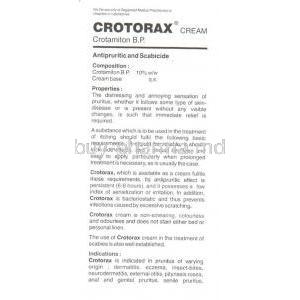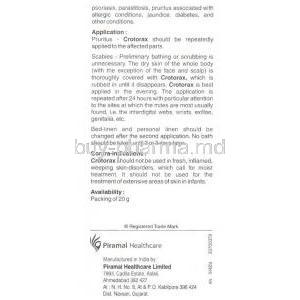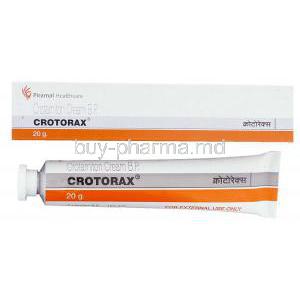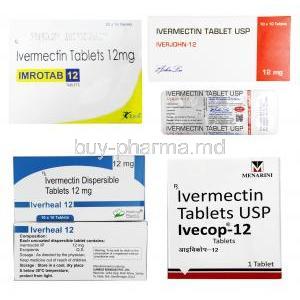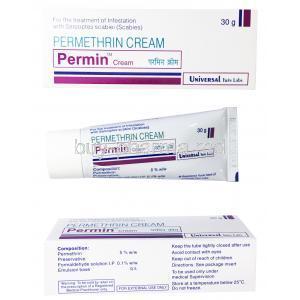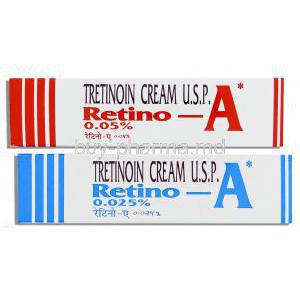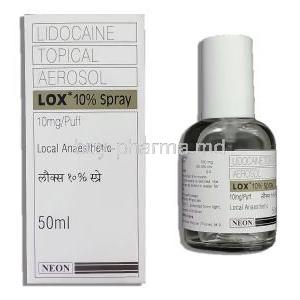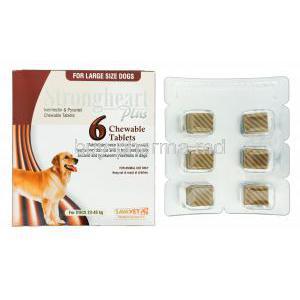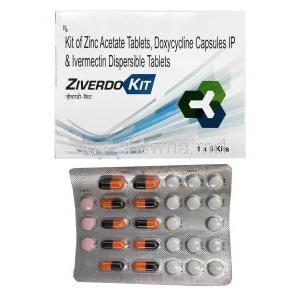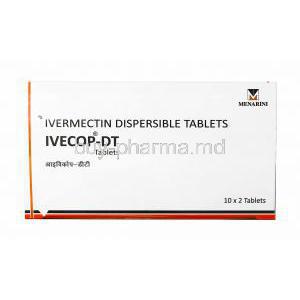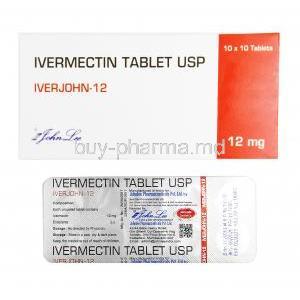1. Introduction
1.1 Overview of Crotorax (Crotamiton Cream)
Crotorax, formulated with the active compound crotamiton, is a topical dermatologic preparation designed to alleviate itching and eradicate scabies infestations. It is widely utilized due to its dual antipruritic and scabicidal properties. The cream delivers targeted relief, penetrating the skin surface to address discomfort at its origin.
1.2 Therapeutic Classification and Primary Clinical Applications
Crotamiton belongs to the class of antipruritic and scabicidal agents. Its primary clinical roles include:
- Treatment of scabies caused by Sarcoptes scabiei.
- Relief of itching linked to various dermatologic conditions.
- Supportive therapy for irritation triggered by allergens or environmental factors.
1.3 Prevalence of Conditions Treated With Crotamiton
Scabies and chronic pruritus affect millions worldwide. These conditions frequently occur in environments with close human contact, such as schools, care facilities, or densely populated living spaces. Persistent itching and parasitic infestations significantly affect quality of life, making agents like crotamiton essential in therapeutic regimens.
1.4 Benefits of Topical Crotamiton for Dermatological Care
Topical crotamiton offers several advantages:
- Rapid itch reduction.
- Targeted relief without systemic involvement.
- Compatibility with sensitive skin when used appropriately.
- Ease of application for home-based treatment.
2. Composition
2.1 Active Ingredient: Crotamiton Concentration and Pharmacological Profile
The active ingredient, crotamiton, is typically present in concentrations of 10% to 20% depending on the formulation. It exerts both antipruritic effects and scabicidal action, disrupting parasite activity and calming sensory nerve responses responsible for itching.
2.2 Inactive Ingredients and Their Formulation Purposes
Inactive excipients support skin absorption, enhance product stability, and improve texture. These may include:
- Moisturizing agents to reduce dryness.
- Emulsifiers that assist in even distribution.
- Preservatives ensuring product safety and longevity.
2.3 Available Dosage Forms and Packaging Variations
Crotorax is commonly available as a cream or lotion. Packaging ranges from small tubes suitable for limited application to larger units intended for full-body treatment in scabies management.
3. Mechanism of Action (How It Works)
3.1 Antipruritic (Anti-Itch) Mechanism
Crotamiton modulates cutaneous sensory pathways responsible for itch transmission. By altering nerve responsiveness, it diminishes pruritus intensity, providing both immediate and sustained comfort.
3.2 Scabicidal Action Against Sarcoptes scabiei in Scabies
The cream exerts direct parasiticidal effects on mites. It compromises the parasite’s cellular integrity, ultimately reducing their survival. This action helps clear infestations when applied thoroughly across the body.
3.3 Impact on Inflammation and Skin Irritation
Crotamiton possesses mild anti-inflammatory attributes that help calm irritated skin. These effects reduce redness, swelling, and persistent warmth associated with dermatologic reactions.
3.4 Absorption Characteristics and Skin Penetration
The formulation is engineered for optimal cutaneous absorption. It penetrates the epidermis, distributing the active agent effectively while minimizing systemic exposure.
4. Uses
4.1 Treatment of Scabies Infestation
Crotorax is frequently used to eradicate scabies mites. Comprehensive application to the entire body from neck to toes is essential for complete therapeutic action.
4.2 Relief of Pruritus Associated With Various Dermatologic Disorders
The cream provides relief for itching caused by allergic reactions, environmental exposure, dermatitis, and other non-infectious skin conditions.
4.3 Management of Chronic Eczematous Conditions With Itching
For individuals with eczema, crotamiton may help reduce the cyclical itch–scratch pattern that worsens skin inflammation.
4.4 Use in Insect Bite-Related Itching
Itching caused by insect bites is significantly alleviated through crotamiton's antipruritic effect.
4.5 Symptomatic Relief for Contact Dermatitis
The cream may provide soothing relief for dermatitis triggered by irritants, chemicals, or allergens.
5. Off-Label Uses
5.1 Adjunctive Therapy for Atopic Dermatitis Pruritus
Although not a primary treatment, crotamiton can supplement therapy to reduce itching associated with atopic dermatitis.
5.2 Use in Allergic Skin Reactions
Its calming properties benefit patients experiencing hypersensitivity reactions manifesting as itchy skin.
5.3 Application in Localized Itching of Unknown Cause
When itching arises from undetermined triggers, crotamiton may support symptomatic control until diagnosis is confirmed.
5.4 Supportive Use in Non-Scabies Mite-Related Dermatitis
Certain mite-related irritations, though not classical scabies, may respond to crotamiton due to its antiparasitic tendencies.
6. Dosage and Administration
6.1 Correct Application Technique for Scabies Treatment
For scabies, the cream should be applied liberally to the entire body below the neck. Particular attention is needed for folds, interdigital spaces, and areas where mites commonly harbor.
6.2 Frequency and Duration of Use for Pruritus Relief
For itching, applications are typically once or twice daily. Duration may vary based on symptom severity.
6.3 Amount to Apply and Body Areas to Avoid
Apply a thin, uniform layer. Avoid the eyes, mouth, genitals, and broken skin to prevent irritation.
6.4 Reapplication Guidelines After Washing
If washing occurs shortly after application, a reapplication may be needed to maintain therapeutic levels.
6.5 Instructions for Severe or Widespread Infestations
Extended application or repeated treatments may be recommended under clinician direction for persistent infestations.
6.6 Missed Dose Management
If a dose is missed, apply as soon as remembered unless it is nearly time for the next scheduled dose.
7. Side Effects
7.1 Possible Dermatologic Adverse Reactions
Some individuals may experience irritation, burning, scaling, or heightened sensitivity following use.
7.2 Rare but Serious Reactions Requiring Medical Attention
On rare occasions, severe inflammation or widespread allergic responses may develop and require evaluation.
7.3 Allergic Reactions and Hypersensitivity Indicators
Symptoms such as swelling, intense redness, or rash formation may indicate hypersensitivity.
7.4 Long-Term Use Considerations
Prolonged application may lead to skin dryness or reduced therapeutic response.
8. Common Side Effects
8.1 Mild Burning or Stinging at the Application Site
Transient stinging is common but usually subsides rapidly.
8.2 Dryness or Redness of the Skin
Some users may notice temporary dryness or erythema.
8.3 Temporary Irritation or Warmth
A mild warming sensation may occur shortly after use.
8.4 Itching Persistence After First Applications
Itching may not resolve immediately; improvement often develops progressively.
9. Drug Interactions
9.1 Interaction With Other Topical Dermatologic Medications
Combining multiple topical agents may increase cumulative irritation.
9.2 Risk With Corticosteroid Combination Therapy
Using potent steroids simultaneously can alter absorption patterns and increase sensitivity.
9.3 Impact of Skin Barrier–Altering Products
Products that thin or disrupt the skin barrier may enhance crotamiton penetration, increasing irritation risks.
9.4 Concurrent Use With Antihistamines or Oral Antiparasitics
Though generally safe, concurrent therapy should be monitored to ensure symptom improvements align with expectations.
10. Warnings
10.1 Avoiding Use on Open Wounds, Broken Skin, or Mucous Membranes
Application to compromised skin can cause significant irritation or systemic absorption.
10.2 Dangers of Improper or Excessive Application
Excessive amounts provide no therapeutic advantage and may amplify adverse reactions.
10.3 Risk of Eye Irritation and Accidental Ingestion
Contact with the eyes results in immediate burning. Ingestion may produce gastrointestinal discomfort.
10.4 Importance of Following Treatment Duration Guidelines
Undue prolongation or premature discontinuation may lead to treatment failure or symptom recurrence.
11. Contraindications
11.1 Known Hypersensitivity to Crotamiton or Formulation Components
Individuals with a documented hypersensitivity to crotamiton or any inactive constituents in the formulation should not use this product. Allergic responses may manifest rapidly, with symptoms that include erythema, swelling, or pronounced pruritus. Discontinuation is mandatory if hypersensitivity is suspected. Early avoidance prevents escalation into more severe dermatologic reactions.
11.2 Contraindicated Skin Conditions
Crotamiton cream should not be applied to certain dermatologic pathologies. These include:
- Severely inflamed or exudative lesions.
- Open wounds and ulcerated areas.
- Extensive eczematous flare-ups where the barrier is severely impaired.
Application on compromised skin may intensify irritation or facilitate unnecessary absorption.
11.3 Use in Patients With Severe Dermatitis Reactions
Patients with a history of intense dermatitis reactions—particularly those involving vesiculation, crusting, or fissuring—should avoid crotamiton unless explicitly directed by a healthcare professional. Severe dermatitis may predispose the patient to exaggerated responses, making cautious assessment essential.
12. Careful Administration
12.1 Patients With Compromised Skin Integrity
When the epidermal barrier is compromised, absorption dynamics can change dramatically. Use with caution in areas exhibiting abrasions, cracked skin, or chronic irritation. A thin application may be advisable to mitigate stinging and burning.
12.2 Patients With Chronic Dermatologic Diseases
Individuals with chronic dermatologic conditions such as psoriasis, chronic eczema, or lichen simplex may require tailored usage. Overly reactive skin may respond unpredictably, necessitating:
- Shortened exposure duration.
- Reduced frequency of application.
- Close observation for paradoxical worsening.
12.3 Use in Individuals With Allergic Tendencies
People with atopic predispositions may be more sensitive to topical preparations. Introducing the cream gradually and observing the skin’s response helps prevent intense inflammatory reactions.
12.4 Monitoring for Worsening Symptoms
If symptoms intensify—such as increased redness, swelling, blistering, or persistent itching—treatment should be halted. These warning signs may indicate intolerance, hypersensitivity, or misdiagnosis.
13. Important Precautions
13.1 Patch-Testing for Sensitive Individuals
Patch-testing is recommended for users with delicate or reactive skin. Applying a small amount on a limited area helps evaluate tolerance. Any adverse response should deter further application.
13.2 Preventing Transmission of Scabies During Treatment
During scabies therapy, preventing reinfestation and transmission is crucial. Key measures include:
- Treating close contacts simultaneously.
- Washing bedding and clothing at high temperatures.
- Vacuuming living spaces to remove residual mites.
13.3 Hygiene and Environmental Decontamination
Maintaining meticulous hygiene enhances treatment outcomes. Contaminated items should be sealed for several days if washing is impossible, as mites cannot survive prolonged isolation.
13.4 Avoiding Simultaneous Irritant Skin Products
Products containing alcohol, strong acids, retinoids, or exfoliants may heighten irritation when used alongside crotamiton. It is advisable to space out applications or avoid irritants entirely during therapy.
14. Administration to Elderly
14.1 Skin Fragility and Absorption Concerns
Elderly individuals often exhibit thinner, more delicate skin. This increases the risk of irritation and enhances percutaneous absorption. Gentle application is recommended to avoid microtrauma.
14.2 Adjusting Frequency Based on Tolerance
Older adults may require reduced frequency of application. A once-daily regimen may suffice to minimize irritation while maintaining therapeutic effectiveness.
14.3 Monitoring for Excessive Dryness or Irritation
Dryness, fissuring, or chronic irritation may occur more readily. Regular assessment helps determine whether moisturizers or regimen adjustments are necessary.
15. Administration to Pregnant Women and Nursing Mothers
15.1 Safety Profile in Pregnancy
Topical crotamiton is generally regarded as low-risk due to minimal systemic absorption. However, use during pregnancy should still be approached cautiously, especially during the first trimester.
15.2 Recommendations for Use During Breastfeeding
While systemic absorption is minimal, the cream should not be applied to the breast area to avoid accidental ingestion by infants. Hands should be washed thoroughly after each use.
15.3 Systemic Absorption Considerations
Systemic exposure is unlikely but may increase when applied on large surfaces or damaged skin. Minimizing coverage areas reduces potential systemic transfer.
15.4 When to Avoid and When Use May Be Justified
Use may be justified when symptoms significantly impair daily life and alternative treatments are unsuitable. Therapy should be avoided when safer options exist or when irritation develops during pregnancy.
16. Administration to Children
16.1 Safety Considerations in Infants and Young Children
Infants have a higher surface area-to-body-weight ratio, increasing absorption risks. Use should be reserved for cases where benefits outweigh potential risks.
16.2 Age-Specific Dosing Precautions
Application should be carefully measured. A thin layer is usually sufficient, and repeat dosing must follow medical guidance.
16.3 Risk of Accidental Ingestion
Children may inadvertently ingest the cream if applied near their hands or face. Caregivers must ensure treated areas are covered when possible.
16.4 Use in Pediatric Scabies Management
Crotamiton is sometimes used for childhood scabies when other treatments are unsuitable. Application must be comprehensive yet cautious, avoiding mucous membranes and broken skin.
17. Overdosage
17.1 Symptoms of Excessive Topical Application
Excessive use may cause intensified burning, redness, peeling, or swelling. These manifestations signal local irritation rather than systemic toxicity.
17.2 Management of Accidental Ingestion
Ingestion may lead to nausea, vomiting, or abdominal discomfort. Oral intake warrants immediate medical evaluation.
17.3 Emergency Treatment Guidelines
Supportive measures such as rinsing the mouth, observing vital signs, and avoiding further exposure are standard. Severe reactions may require symptomatic treatment.
18. Handling Precautions
18.1 Safe Storage and Avoidance of Heat or Contamination
The cream should be stored securely, away from excessive heat or contaminants. Exposure to extreme temperatures can destabilize the formulation.
18.2 Preventing Accidental Eye or Mouth Contact
Care must be taken to prevent transfer from the hands to the eyes or mouth. If accidental contact occurs, rinse thoroughly with water.
18.3 Proper Handwashing After Application
Hands should always be washed immediately following application to avoid unintended exposure to others or accidental ingestion.
18.4 Instructions for Handling Used Clothing and Linens
Clothing and bedding used during treatment may harbor mites. Hot-water washing or sealing items for 72 hours helps prevent reinfestation.
19. Storage
19.1 Recommended Temperature Conditions
Store the cream at controlled room temperature. Extreme temperatures may degrade the active ingredient.
19.2 Protecting From Direct Light and Moisture
Direct light and humidity can compromise product stability. Containers should remain tightly closed when not in use.
19.3 Shelf Life and Expiry Information
Observe the expiration date printed on the packaging. Expired products may lose potency or develop texture changes.
19.4 Discarding Expired or Contaminated Product
Expired or contaminated cream should be discarded safely. Avoid flushing or disposing in open environments; follow local disposal guidelines.







